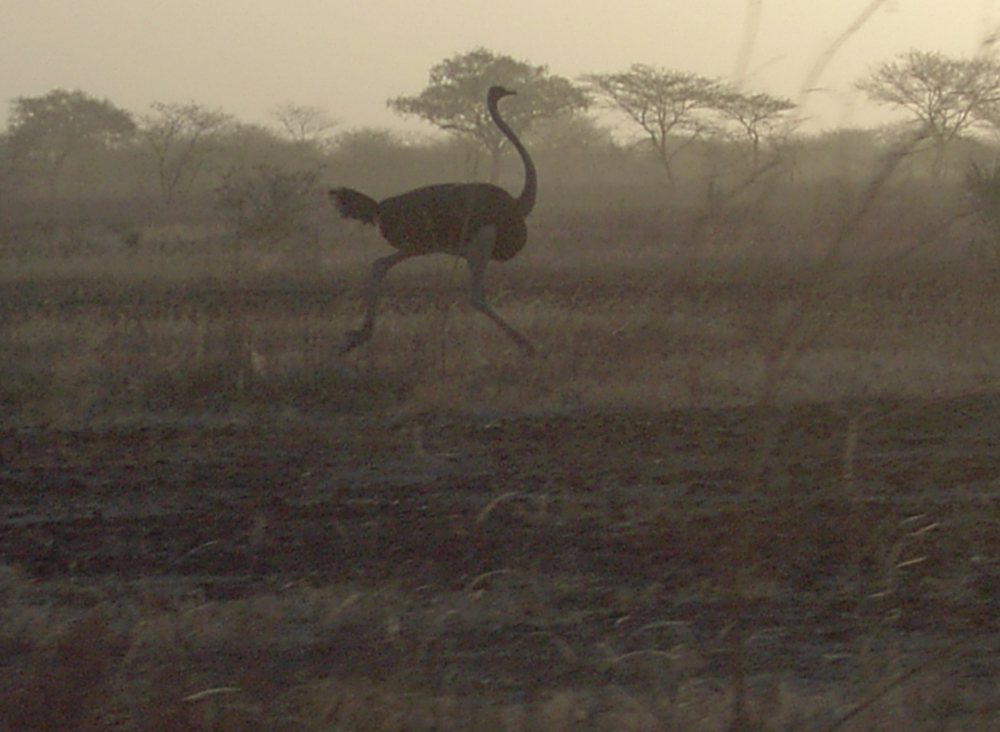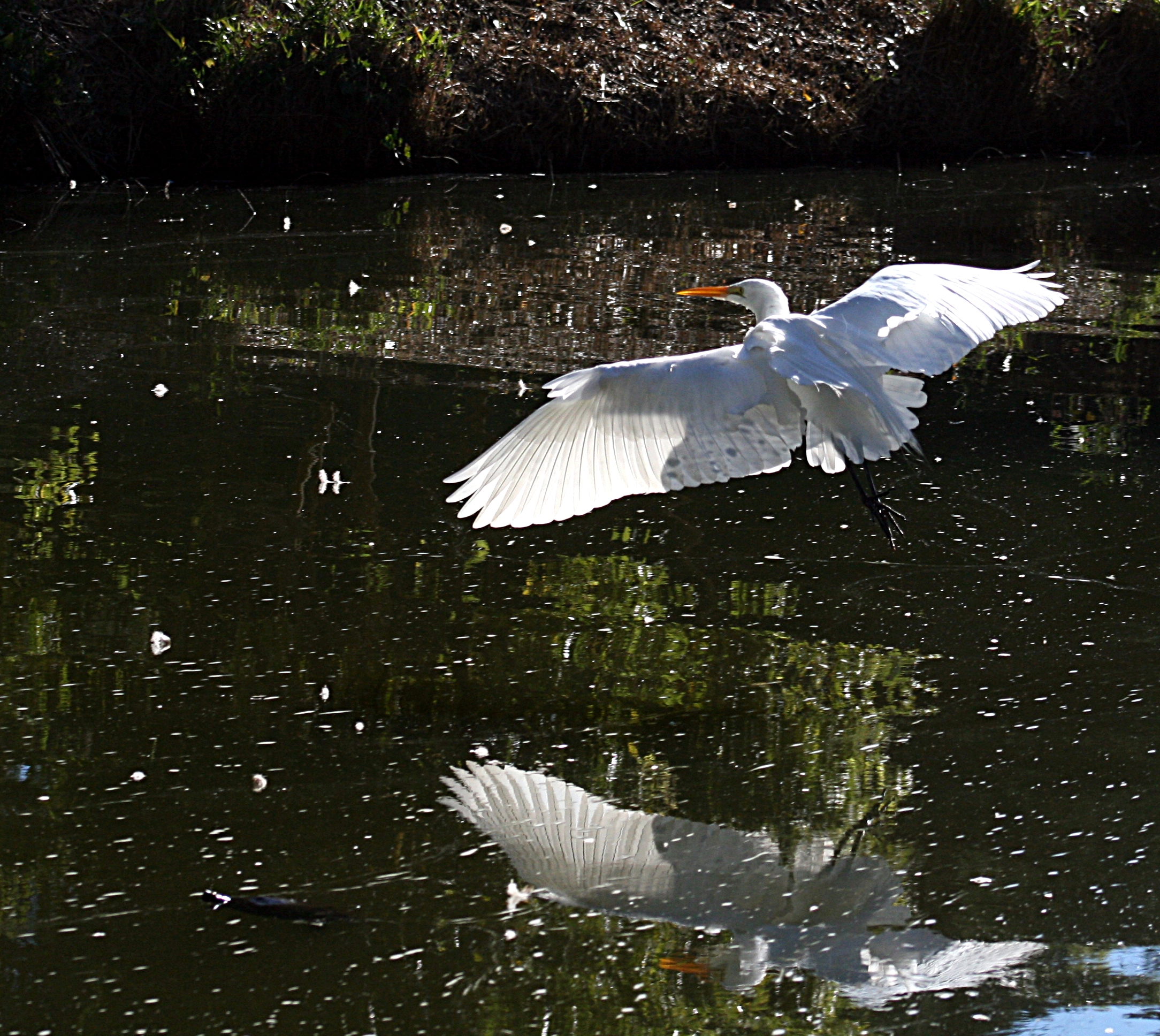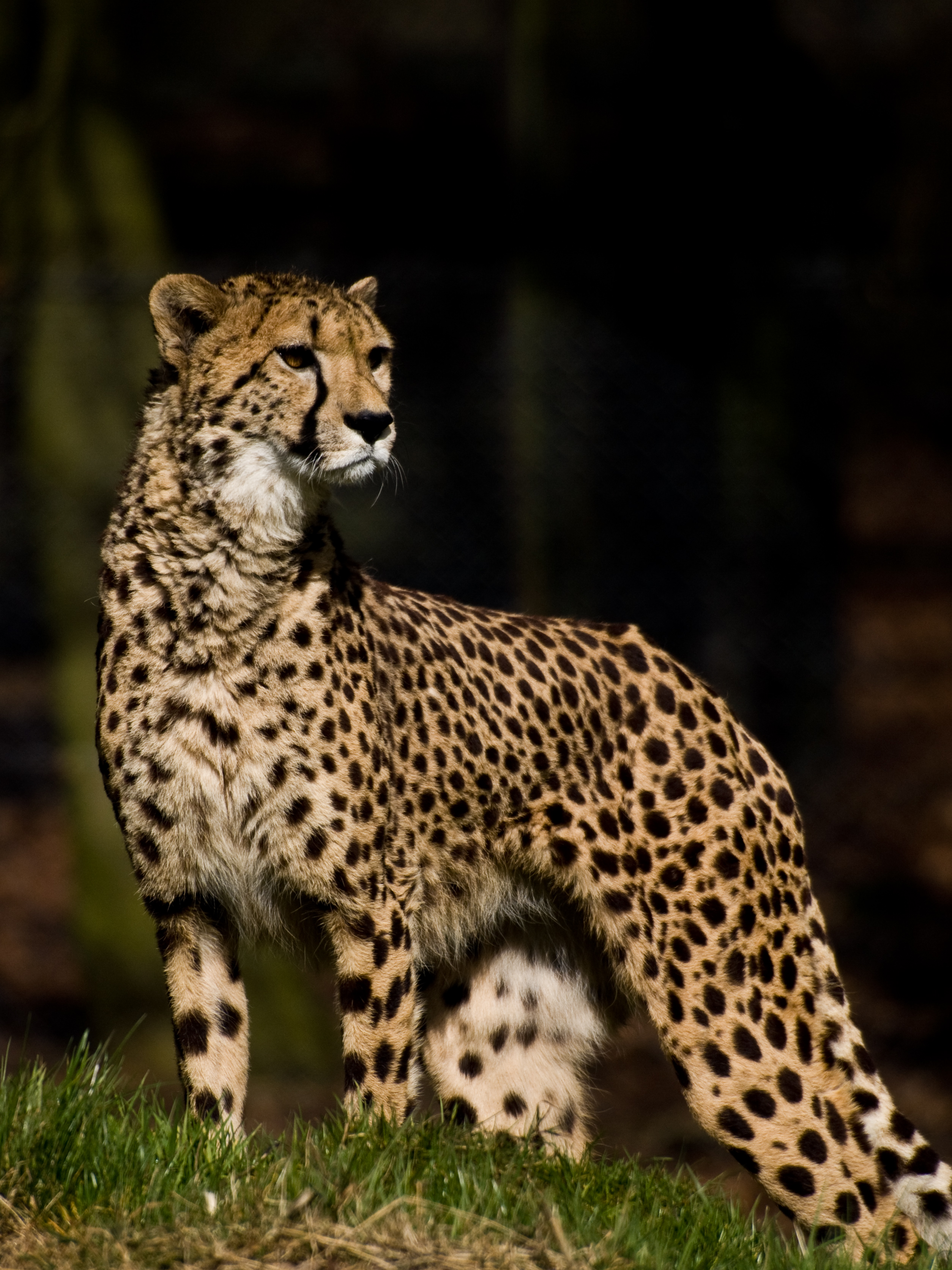|
Waza National Park
Waza National Park is a national park in the Department of Logone-et-Chari, in Far North Region, Cameroon. It was founded in 1934 as a hunting reserve, and covers a total of . Waza achieved national park status in 1968, and became a UNESCO biosphere reserve in 1979. For the preservation and conservation of the biodiversity of the park, a Management Master Plan was drawn up in 1997, reported to be the first of its kind in Cameroon. The park is adjacent to the Chingurmi-Duguma sector of Nigeria's Chad Basin National Park. There is also a proposal to combine this park with the Waza Logone floodplain as a Ramsar Site. The forest dwellers who had their villages within the park were resettled on the borders of the park, after it was established. This was done with the objective of creating a social buffer to poaching activities and preserve the park's resources. The dominant vegetation is in the transition zone between the Sahel and Sudan savanna, containing acacia and open Yaéré ... [...More Info...] [...Related Items...] OR: [Wikipedia] [Google] [Baidu] |
Far North Province, Cameroon
The Far North Region, also known as the Extreme North Region (from french: Région de l'Extrême-Nord), is the northernmost constituent province of the Republic of Cameroon. It borders the North Region to the south, Chad to the east, and Nigeria to the west. The capital is Maroua. The province is one of Cameroon's most culturally diverse. Over 50 different ethnic groups populate the area, including the Shuwa Arabs, Fulani, and Kapsiki. Most inhabitants speak the Fulani language Fulfulde, Chadian Arabic, and French. Geography Land Sedimentary rock such as alluvium, clay, limestone, and sandstone forms the greatest share of the Far North's geology. These deposits follow the province's rivers, such as the Logone and Mayo Tsanaga, as they empty into Lake Chad to the north. At the province's south, a band of granite separates the sedimentary area from a zone of metamorphic rock to the southwest. This latter region includes deposits of gneiss, mica, and schists. The Rhumsiki Va ... [...More Info...] [...Related Items...] OR: [Wikipedia] [Google] [Baidu] |
Lion
The lion (''Panthera leo'') is a large Felidae, cat of the genus ''Panthera'' native to Africa and India. It has a muscular, broad-chested body; short, rounded head; round ears; and a hairy tuft at the end of its tail. It is sexually dimorphic; adult male lions are larger than females and have a prominent mane. It is a social species, forming groups called ''prides''. A lion's pride consists of a few adult males, related females, and cubs. Groups of female lions usually hunt together, preying mostly on large ungulates. The lion is an apex predator, apex and keystone predator; although some lions scavenge when opportunities occur and have been known to hunt Human, humans, lions typically don't actively seek out and prey on humans. The lion inhabits grasslands, savannas and shrublands. It is usually more diurnality, diurnal than other wild cats, but when persecuted, it adapts to being active nocturnality, at night and crepuscular, at twilight. During the Neolithic period, the li ... [...More Info...] [...Related Items...] OR: [Wikipedia] [Google] [Baidu] |
Pelican
Pelicans (genus ''Pelecanus'') are a genus of large water birds that make up the family Pelecanidae. They are characterized by a long beak and a large throat pouch used for catching prey and draining water from the scooped-up contents before swallowing. They have predominantly pale plumage, except for the brown and Peruvian pelicans. The bills, pouches, and bare facial skin of all pelicans become brightly coloured before the breeding season. The eight living pelican species have a patchy global distribution, ranging latitudinally from the tropics to the temperate zone, though they are absent from interior South America and from polar regions and the open ocean. Long thought to be related to frigatebirds, cormorants, tropicbirds, and gannets and boobies, pelicans instead are now known to be most closely related to the shoebill and hamerkop, and are placed in the order Pelecaniformes. Ibises, spoonbills, herons, and bitterns have been classified in the same order. Foss ... [...More Info...] [...Related Items...] OR: [Wikipedia] [Google] [Baidu] |
Heron
The herons are long-legged, long-necked, freshwater and coastal birds in the family Ardeidae, with 72 recognised species, some of which are referred to as egrets or bitterns rather than herons. Members of the genera ''Botaurus'' and ''Ixobrychus'' are referred to as bitterns, and, together with the zigzag heron, or zigzag bittern, in the monotypic genus ''Zebrilus'', form a monophyletic group within the Ardeidae. Egrets do not form a biologically distinct group from herons, and tend to be named differently because they are mainly white or have decorative plumes in breeding plumage. Herons, by evolutionary adaptation, have long beaks. The classification of the individual heron/egret species is fraught with difficulty, and no clear consensus exists about the correct placement of many species into either of the two major genera, '' Ardea'' and ''Egretta''. Similarly, the relationships of the genera in the family are not completely resolved. However, one species formerly considere ... [...More Info...] [...Related Items...] OR: [Wikipedia] [Google] [Baidu] |
North African Ostrich
The North African ostrich, red-necked ostrich, or Barbary ostrich (''Struthio camelus camelus'') is the nominate subspecies of the common ostrich from West and North Africa. It is the largest subspecies, making it the largest living bird. Evolutionary history In the 1990s, mtDNA analyses control region haplotypes revealed that the Arabian ostrich from Western Asia is closely related to the North African ostrich. In 2017, the Birbal Sahni Institute of Palaeobotany discovered that common ostriches used to live in India about 25,000 years ago. DNA research on eleven fossilised eggshells from eight archaeological sites in the states of Rajasthan, Gujarat and Madhya Pradesh found 92% genetic similarity between the eggshells and the North African ostrich. Description The North African ostrich is the largest subspecies of ''S. camelus'', at in height and up to in weight. The neck is pinkish-red, the plumage of males is black and white, and the plumage of females is gray. Habitat a ... [...More Info...] [...Related Items...] OR: [Wikipedia] [Google] [Baidu] |
Egret
Egrets ( ) are herons, generally long-legged wading birds, that have white or buff plumage, developing fine plumes (usually milky white) during the breeding season. Egrets are not a biologically distinct group from herons and have the same build. Biology Many egrets are members of the genera ''Egretta'' or '' Ardea'', which also contain other species named as herons rather than egrets. The distinction between a heron and an egret is rather vague, and depends more on appearance than biology. The word "egret" comes from the French word ''aigrette'' that means both "silver heron" and "brush", referring to the long, filamentous feathers that seem to cascade down an egret's back during the breeding season (also called "egrets"). Several of the egrets have been reclassified from one genus to another in recent years; the great egret, for example, has been classified as a member of either ''Casmerodius'', ''Egretta'', or ''Ardea''. In the 19th and early part of the 20th centuries ... [...More Info...] [...Related Items...] OR: [Wikipedia] [Google] [Baidu] |
Goose
A goose (plural, : geese) is a bird of any of several waterfowl species in the family (biology), family Anatidae. This group comprises the genera ''Anser (bird), Anser'' (the grey geese and white geese) and ''Branta'' (the black geese). Some other birds, mostly related to the shelducks, have "goose" as part of their names. More distantly related members of the family Anatidae are swans, most of which are larger than true geese, and ducks, which are smaller. The term "goose" may refer to either a male or female bird, but when paired with "gander", refers specifically to a female one (the latter referring to a male). Young birds before fledging are called goslings. The List of collective nouns, collective noun for a group of geese on the ground is a gaggle; when in flight, they are called a skein, a team, or a wedge; when flying close together, they are called a plump. Etymology The word "goose" is a direct descendant of,''*ghans-''. In Germanic languages, the root gave Old E ... [...More Info...] [...Related Items...] OR: [Wikipedia] [Google] [Baidu] |
West African Giraffe
The West African giraffe (''Giraffa camelopardalis peralta''), Niger giraffe or Nigerien giraffe is a subspecies of the giraffe distinguished by its light colored spots. It is found in the Sahel of West Africa. In the 19th century it ranged from Senegal to Lake Chad, yet in 2011 this subspecies only survives in a few isolated pockets containing about 400 individuals in total. Its last self-sustaining herd is in southwest Niger, supported by a series of refuges in Dosso Region and the tourist center at Kouré, some 80 km southeast of Niamey.Niger : la population des girafes augmente de 24% en 2011 (officiel) Xinhua, 2012-03-01. All captive so-called "West African giraffe" are now known to be the |
Sudan Cheetah
The Northeast African cheetah (''Acinonyx jubatus soemmeringii'') is a cheetah subspecies occurring in Northeast Africa. Contemporary records are known in South Sudan and Ethiopia, but population status in Eritrea, Djibouti, Somalia and Sudan is unknown. It was first described under the scientific name ''Cynailurus soemmeringii'' by the Austrian zoologist Leopold Fitzinger in 1855 on the basis of a specimen from Sudan’s Bayuda Desert brought to the Tiergarten Schönbrunn in Vienna. It is also known as the Sudan cheetah. In the 1970s, the cheetah population in Ethiopia, Sudan and Somalia was roughly estimated at 1,150 to 4,500 individuals. In 2007, it was estimated that 950 individuals live inside protected areas in this region; the number of individuals living outside protected areas is unknown. This subspecies is more closely related to the Southern African cheetah than to Saharan cheetah populations. Results of a phylogeographic analysis indicate that the two subspecies ... [...More Info...] [...Related Items...] OR: [Wikipedia] [Google] [Baidu] |
Gazelle
A gazelle is one of many antelope species in the genus ''Gazella'' . This article also deals with the seven species included in two further genera, ''Eudorcas'' and '' Nanger'', which were formerly considered subgenera of ''Gazella''. A third former subgenus, '' Procapra'', includes three living species of Asian gazelles. Gazelles are known as swift animals. Some are able to run at bursts as high as or run at a sustained speed of . Gazelles are found mostly in the deserts, grasslands, and savannas of Africa; but they are also found in southwest and central Asia and the Indian subcontinent. They tend to live in herds, and eat fine, easily digestible plants and leaves. Gazelles are relatively small antelopes, most standing high at the shoulder, and are generally fawn-colored. The gazelle genera are ''Gazella'', ''Eudorcas'', and ''Nanger''. The taxonomy of these genera is confused, and the classification of species and subspecies has been an unsettled issue. Currently, th ... [...More Info...] [...Related Items...] OR: [Wikipedia] [Google] [Baidu] |
Waterbuck
The waterbuck (''Kobus ellipsiprymnus'') is a large antelope found widely in sub-Saharan Africa. It is placed in the genus '' Kobus'' of the family Bovidae. It was first described by Irish naturalist William Ogilby in 1833. Its 13 subspecies are grouped under two varieties: the common or ellipsiprymnus waterbuck and the defassa waterbuck. The head-and-body length is typically between and the typical height is between . In this sexually dimorphic antelope, males are taller and heavier than females. Males reach roughly at the shoulder, while females reach . Males typically weigh and females . Their coat colour varies from brown to grey. The long, spiral horns, present only on males, curve backward, then forward, and are long. Waterbucks are rather sedentary in nature. As gregarious animals, they may form herds consisting of six to 30 individuals. These groups are either nursery herds with females and their offspring or bachelor herds. Males start showing territorial behaviou ... [...More Info...] [...Related Items...] OR: [Wikipedia] [Google] [Baidu] |






.jpg)



